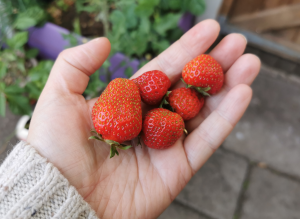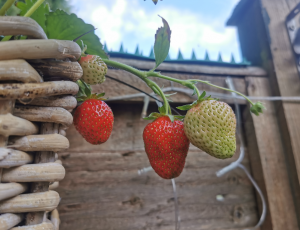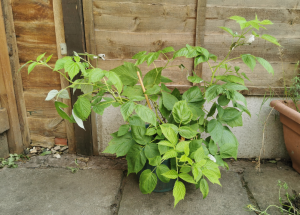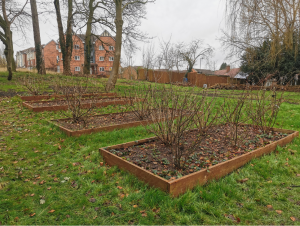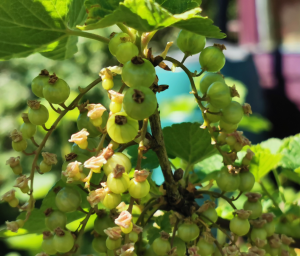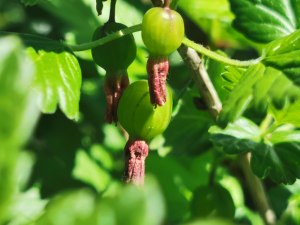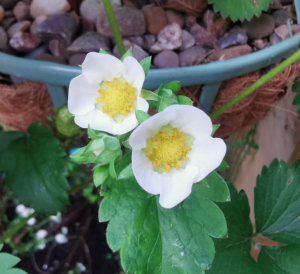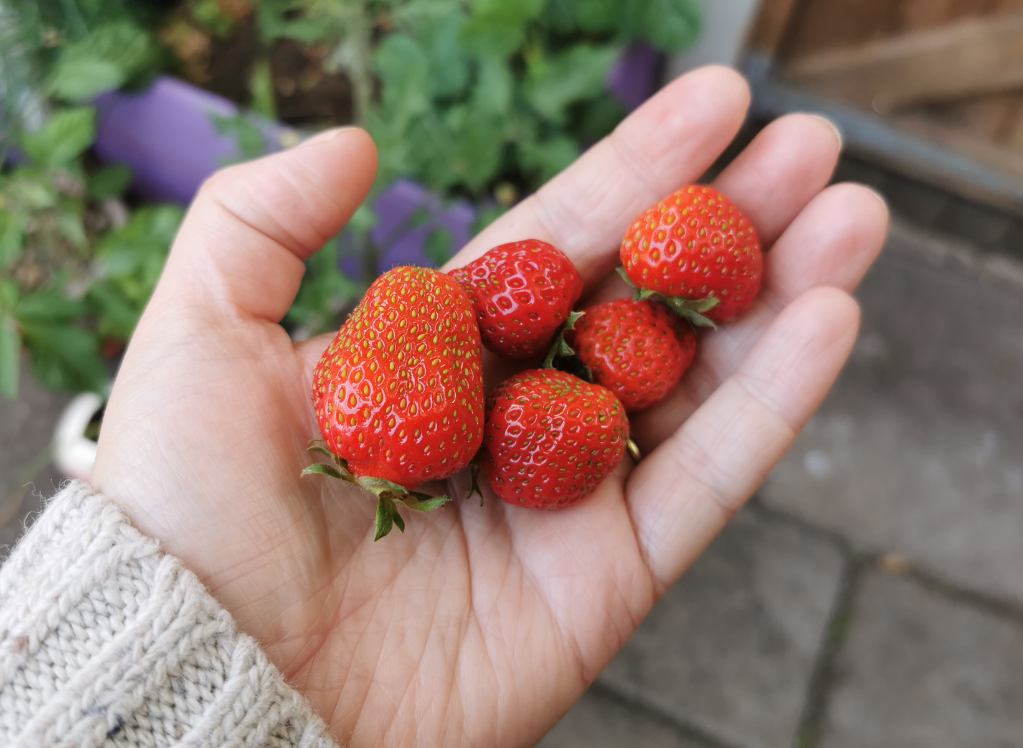
Soft fruits are perfect for planting during the late autumn and winter months so that they are ready to get growing in spring! Maybe start your Christmas shopping early and treat yourself to some new plants?
What Are Soft Fruits?
Soft fruits are also known as berries, but it also includes tree fruits such as cherries and plums, and shrub fruits such as currants, blueberries, and gooseberries. This article looks at growing these, plus strawberries and raspberries.
Which Ones to Grow?
As with everything, grow what you like! Do you enjoy making jams and jellies? Or just snacking on a bowl of fresh fruit and yogurt? Perhaps you want to grow enough soft fruit to get you through the summer months without buying any?
To make things interesting and different, have a look at different coloured fruits. You can get white strawberries, yellow raspberries, purple or yellow plums, pink blueberries (yes, really!), red gooseberries, and all sorts in between.
How Many to Grow?
This depends on what room you have available. Strawberries can be slotted in between other plants and crops, but fruit trees and shrubs will require more space. Most of these crops can be planted in pots – but a cherry tree would need a big pot!
Currant bushes can provide a lot of fruit per bush as long as they are protected from birds. Two bushes of each variety (red, black, white) would be enough for a family.
Raspberries can also put out lots of fruit – the more you pick, the more they flower. I have 4 yellow canes and 4 red canes on my allotment, and 2 of each in the garden.
Strawberries I feel like you can never have too many – I daren’t count how many plants I have! I have a strawberry hanging basket with ten plants, and quite a few more baskets and pots as well.
You can buy self-fertile fruit trees (plum, cherry) which means you only need one.
Where to Grow Soft Fruit
Different fruits can be grown in different places. I am growing strawberries in hanging baskets, pots, at the edges of raised beds, and in over-fence trough planters. Growing strawberries off the ground helps reduce rot and slug damage, but it does make them more accessible to birds!
Raspberries might need to tied to a stake or support, as they grow tall – some raspberry canes can trail for 3m or more – so they need tying and training. You could grow them against a fence or trellis, or make them a tepee similar to growing beans. If you don’t have room for them to grow and trail, you will need to keep them pruned back.
^^ strawberries in an over-fence planter and raspberries in a pot ^^
Blackberries grow on bramble plants, so leaving an area of your garden to go wild isn’t a bad thing! There are also some thorn-free varieties which makes for easier picking.
Red-, black-, white-currants, gooseberries and blueberries all form bushy shrubs so don’t need support, but they do need room to grow, and enough space around them for installing netting to keep the birds off! Blueberries are best grown in their own pots with ericaceous compost. They need acid in the ground to support their growth.
Cherries and plums grow on trees and these can take up a lot of room – both in height and width.
I am growing soft fruit in hanging baskets, raised beds, and pots. I also have bushes on my allotment that were already there when I took it on, and these are planted directly into the ground.
When to Plant Soft Fruit
The best time to plant fruit bushes and canes is in winter before the ground solidifies, or in spring when it has thawed out again. Strawberry plants can be planted all year round but may not fruit until the following year. Strawberry plants need digging up and moving every 3-4 years.
Trees are best planted bare root in late autumn or winter, whilst they are dormant.
Growing Soft Fruit
Soft fruits can be propagated when they have finished fruiting for the year. Strawberries put out runners with a small plant at the end, this can be rooted wherever it touches dirt, or they can be placed in water to encourage roots to grow before being cut off and potted up.
Raspberries can be divided at the root – dig them up and use a spade to chop a clump in half. If it is a big root clump you can probably break it into four. These will then put out fresh roots and grow into new plants.
Plums grow readily wherever stones fall, and the fruits are eaten by all sorts of animals which spread the seed when they poop. Plum trees also produce suckers, so a baby plum tree will appear by the parent tree and grow.
Applying a good mulch around fruit trees and bushes will help their growth – you can use homemade compost, leaf litter, rotted manure, or just dig clods of turf out and lay them upside-down around the base of the plant in a donut shape so that the pile isn’t touching the trunk of the tree.
At our Green Gym sites, the fruit bushes and trees are planted into raised beds (currant bushes at Selly Oak and Ley Hill) or directly into the ground (fruit trees at Ley Hill). At home, I have raspberry canes planted into big pots, strawberries in hanging baskets, and bushes planted straight into the ground on the allotment.
^^ fruit growing area at Ley Hill Green Gym community growspace
You can (if you have room!) make a soft fruit cage that you can walk inside, like a polytunnel but with mesh over it instead. This will keep birds out but also mean you can access the plants for tending them and harvesting crops.
Soft fruit bushes will need pruning in their second year – this encourages new growth on the plants. This is best done in winter when the plants are dormant. Cut one third of the stems down to the ground – they will send out new shoots in the spring. Crops with stones (cherries and plums) are pruned in the early summer. The idea is to open the bushes and trees up into a goblet (wine glass) shape. This allows sun and air to circulate around the inside of the bush which can reduce rot and disease.
Plant Spacing
Strawberries can be planted at the edges of beds, about 15-20cm apart. Raspberry canes can be grown as a screen or against a fence and can be pruned to stay flat like a sheet rather than big and bushy.
Currants, gooseberries, and blueberries can form big shrubs if you let them, but they should be pruned back every year to retain and encourage healthy growth patterns.
^^ currants (left) and gooseberries (right)
Crop Rotation
Strawberry plants should be moved every three years, and if they are old plants they might revert to being ‘wild’ and produce small berries instead. These are just as yummy, but you need a lot more to dunk in a pot of cream.
All other fruits can be left in their growing positions and do not require moving.
Companion Planting
Do not plant raspberries near strawberries as this can encourage a fungus to spread.
Plant nasturtium under trees and shrubs, and borage near raspberries.
Most soft fruits dislike being planted near onions, leek or garlic, so don’t plant these near them!
Harvesting Your Soft Fruit
Be careful of spines and thorns! Blackberries, raspberries, currants, and gooseberries are all thorny plants. You can buy thornless varieties. Pick the fruit when they are big and plump, and not hard when you squeeze them (gently!) – they should have a bit of squishy give. Pull them gently and they should come away from the plant easily. If they resist the pull then they need a bit longer to ripen up. The colour should be intense and bright, not pale – pale fruits are generally not ripe.
Whenever I pick soft fruit it very rarely makes it all the way home as I like to eat berries straight off the plant, but it is advisable that you take them home and wash them under running water, or soak them in a bowl of water. This will wash off any bugs that are lurking!
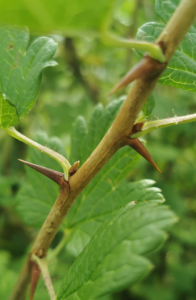 << thorns on a gooseberry plant
<< thorns on a gooseberry plant
Hints and Tips
If you have any questions, Laura is happy to answer them via email, Facebook or Twitter
Email: Laura.Hamilton@TCV.org.uk
Facebook: Health For Life in the Community
Twitter: TCV_Birmingham
Remember to share your pictures with us on Facebook and Twitter too!
^^ strawberry flowers
